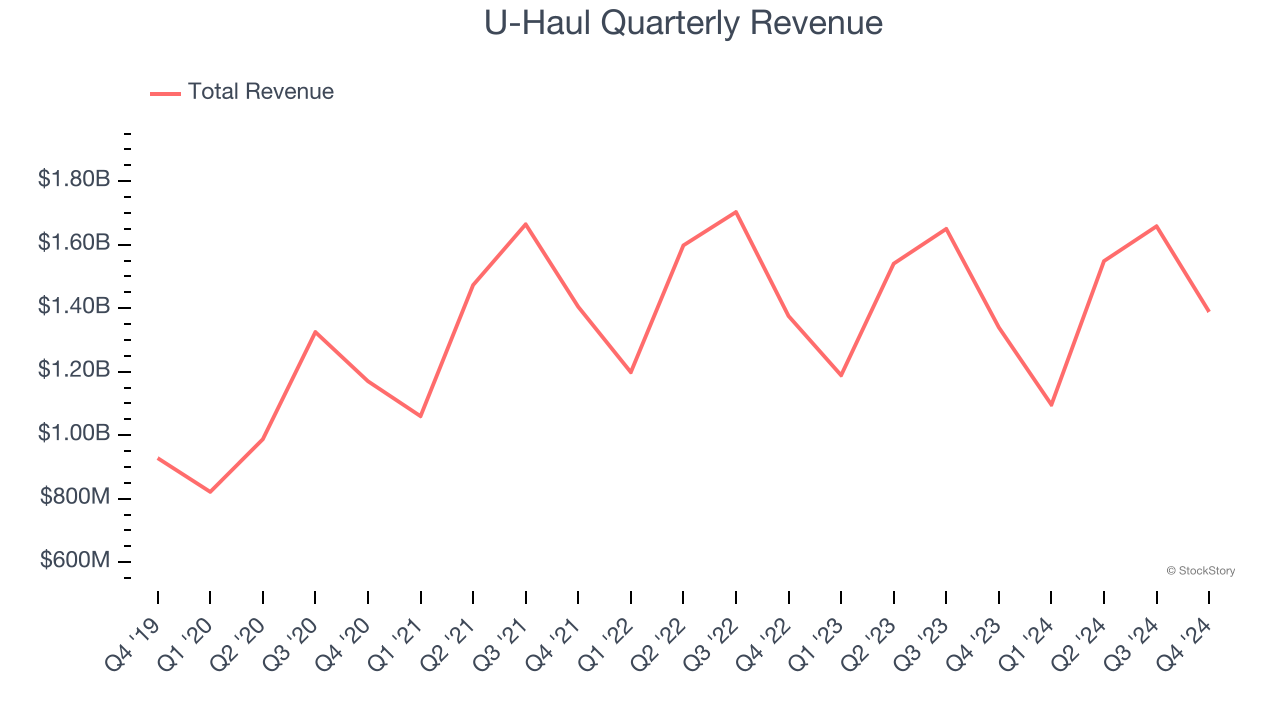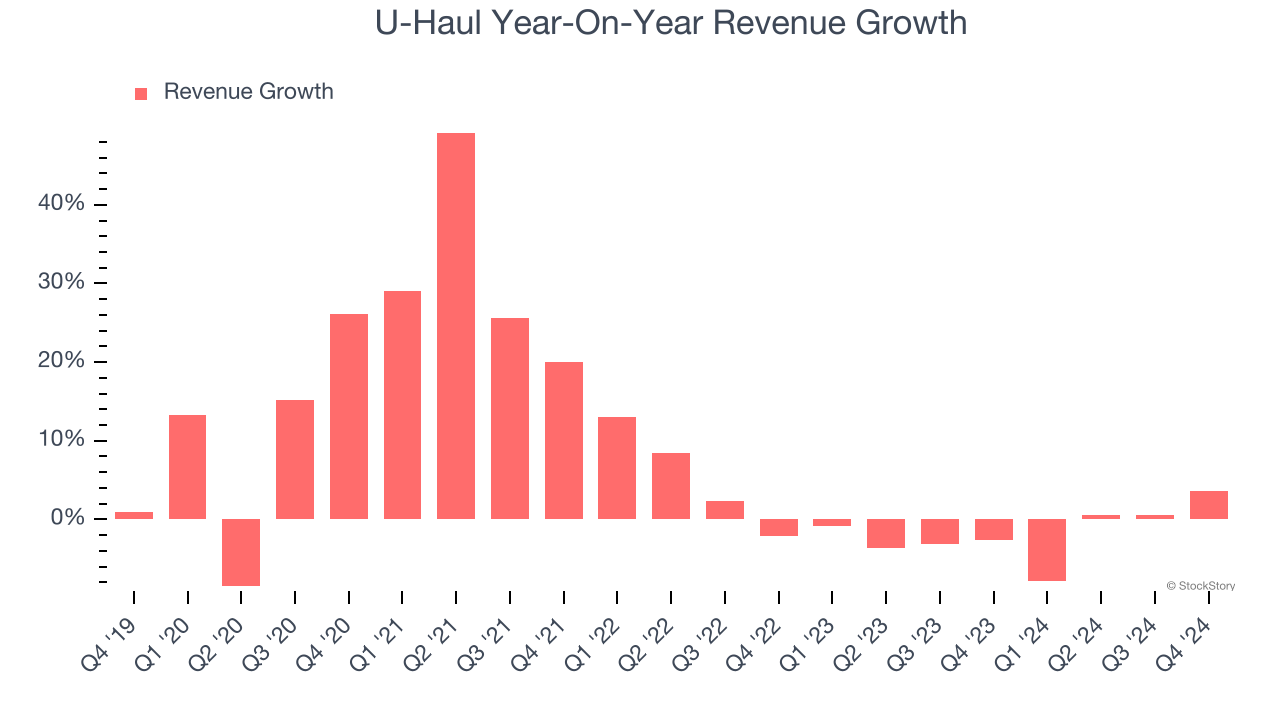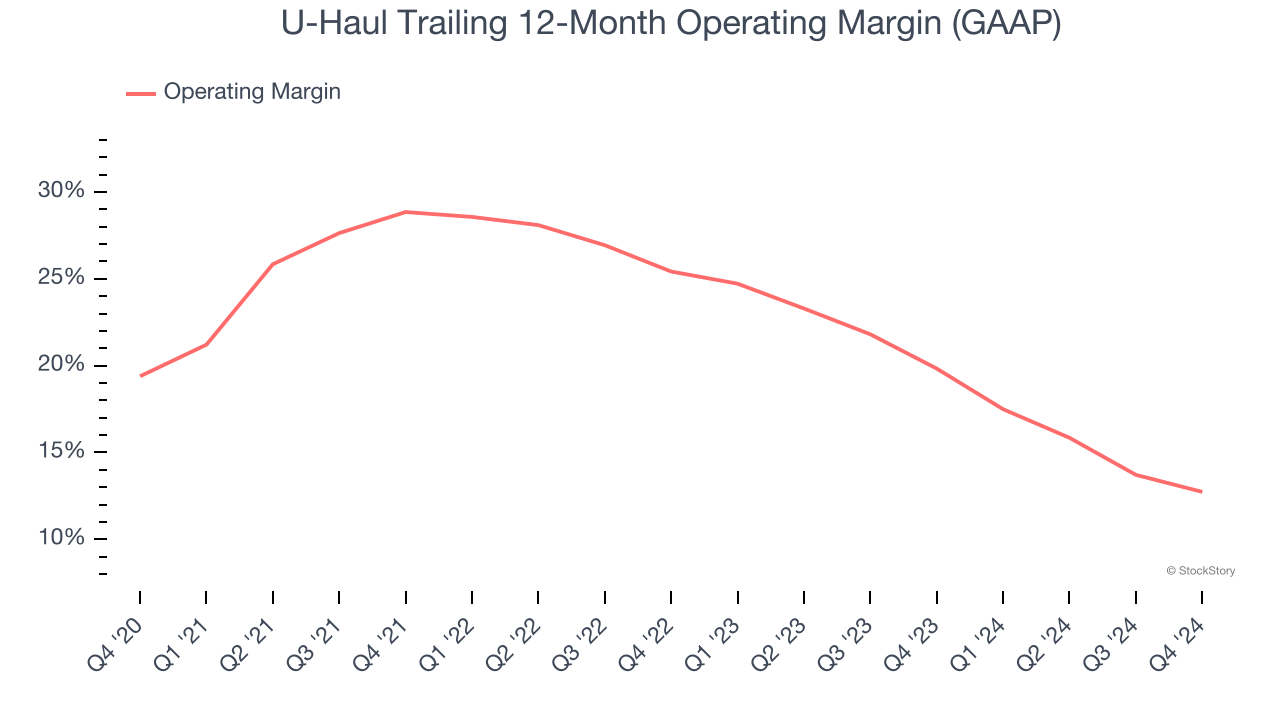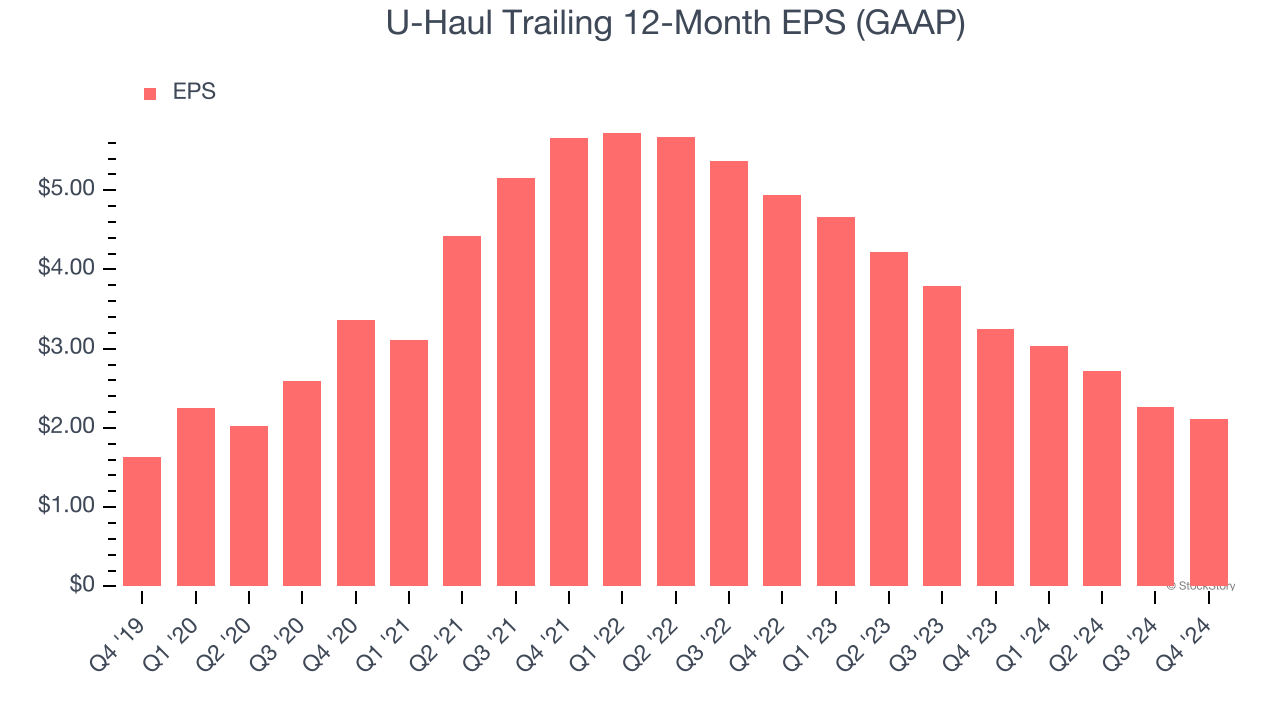
Moving and storage solutions provider U-Haul (NYSE:UHAL) reported Q4 CY2024 results topping the market’s revenue expectations, with sales up 3.7% year on year to $1.39 billion. Its GAAP profit of $0.30 per share was 37.5% below analysts’ consensus estimates.
Is now the time to buy U-Haul? Find out by accessing our full research report, it’s free.
U-Haul (UHAL) Q4 CY2024 Highlights:
- Revenue: $1.39 billion vs analyst estimates of $1.35 billion (3.7% year-on-year growth, 3.1% beat)
- EPS (GAAP): $0.30 vs analyst expectations of $0.48 (37.5% miss)
- Operating Margin: 10.9%, down from 14.9% in the same quarter last year
- Market Capitalization: $12.55 billion
“Moving activity increased over the quarter as demand for our products and services ticked up,” stated Joe Shoen, Chairman of U-Haul Holding Company.
Company Overview
Founded by a husband and wife duo, U-Haul (NYSE:UHAL) is a provider of rental trucks and storage facilities.
Ground Transportation
The growth of e-commerce and global trade continues to drive demand for shipping services, especially last-mile delivery, presenting opportunities for ground transportation companies. The industry continues to invest in data, analytics, and autonomous fleets to optimize efficiency and find the most cost-effective routes. Despite the essential services this industry provides, ground transportation companies are still at the whim of economic cycles. Consumer spending, for example, can greatly impact the demand for these companies’ offerings while fuel costs can influence profit margins.
Sales Growth
Reviewing a company’s long-term sales performance reveals insights into its quality. Any business can have short-term success, but a top-tier one grows for years. Over the last five years, U-Haul grew its sales at a decent 7.9% compounded annual growth rate. Its growth was slightly above the average industrials company and shows its offerings resonate with customers.

We at StockStory place the most emphasis on long-term growth, but within industrials, a half-decade historical view may miss cycles, industry trends, or a company capitalizing on catalysts such as a new contract win or a successful product line. U-Haul’s recent history marks a sharp pivot from its five-year trend as its revenue has shown annualized declines of 1.6% over the last two years. U-Haul isn’t alone in its struggles as the Ground Transportation industry experienced a cyclical downturn, with many similar businesses observing lower sales at this time. 
This quarter, U-Haul reported modest year-on-year revenue growth of 3.7% but beat Wall Street’s estimates by 3.1%.
We also like to judge companies based on their projected revenue growth, but not enough Wall Street analysts cover the company for it to have reliable consensus estimates.
Here at StockStory, we certainly understand the potential of thematic investing. Diverse winners from Microsoft (MSFT) to Alphabet (GOOG), Coca-Cola (KO) to Monster Beverage (MNST) could all have been identified as promising growth stories with a megatrend driving the growth. So, in that spirit, we’ve identified a relatively under-the-radar profitable growth stock benefiting from the rise of AI, available to you FREE via this link.
Operating Margin
Operating margin is one of the best measures of profitability because it tells us how much money a company takes home after procuring and manufacturing its products, marketing and selling those products, and most importantly, keeping them relevant through research and development.
U-Haul has been a well-oiled machine over the last five years. It demonstrated elite profitability for an industrials business, boasting an average operating margin of 21.3%. This result isn’t too surprising as its gross margin gives it a favorable starting point.
Analyzing the trend in its profitability, U-Haul’s operating margin decreased by 6.7 percentage points over the last five years. Even though its historical margin is high, shareholders will want to see U-Haul become more profitable in the future.

In Q4, U-Haul generated an operating profit margin of 10.9%, down 4.1 percentage points year on year. Conversely, its revenue and gross margin actually rose, so we can assume it was recently less efficient because its operating expenses like marketing, R&D, and administrative overhead grew faster than its revenue.
Earnings Per Share
Revenue trends explain a company’s historical growth, but the long-term change in earnings per share (EPS) points to the profitability of that growth – for example, a company could inflate its sales through excessive spending on advertising and promotions.
U-Haul’s EPS grew at an unimpressive 5.2% compounded annual growth rate over the last five years, lower than its 7.9% annualized revenue growth. This tells us the company became less profitable on a per-share basis as it expanded due to non-fundamental factors such as interest expenses and taxes.

We can take a deeper look into U-Haul’s earnings to better understand the drivers of its performance. As we mentioned earlier, U-Haul’s operating margin declined by 6.7 percentage points over the last five years. This was the most relevant factor (aside from the revenue impact) behind its lower earnings; taxes and interest expenses can also affect EPS but don’t tell us as much about a company’s fundamentals.
Like with revenue, we analyze EPS over a more recent period because it can provide insight into an emerging theme or development for the business.
U-Haul’s two-year annual EPS declines of 34.6% were bad and lower than its two-year revenue performance.
In Q4, U-Haul reported EPS at $0.30, down from $0.46 in the same quarter last year. This print missed analysts’ estimates. We also like to analyze expected EPS growth based on Wall Street analysts’ consensus projections, but there is insufficient data.
Key Takeaways from U-Haul’s Q4 Results
We enjoyed seeing U-Haul exceed analysts’ revenue expectations this quarter. On the other hand, its EPS missed significantly. Overall, this was a softer quarter, but the stock traded up 2.4% to $73.29 immediately after reporting.
Should you buy the stock or not? We think that the latest quarter is only one piece of the longer-term business quality puzzle. Quality, when combined with valuation, can help determine if the stock is a buy. We cover that in our actionable full research report which you can read here, it’s free.
